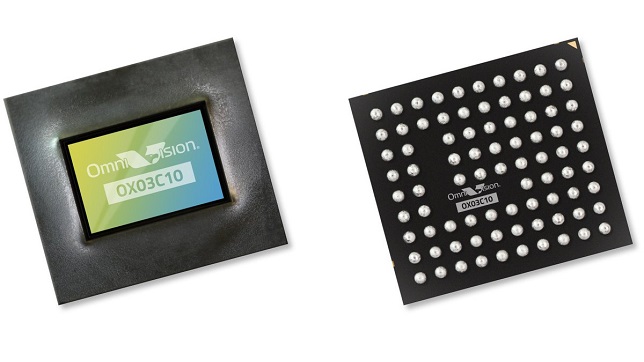OmniVision and Nextchip partner on automotive viewing camera solution, simultaneously providing 120 dB HDR and highest LED flicker mitigation for low-end and midrange vehicles
Pre-Tuned Solution Saves Camera Designers 3 Months of Tuning Effort to Process Images Captured by Two OmniVision Sensors With Simultaneous HDR and LFM, Using a Single Nextchip Image Signal Processor

OmniVision Technologies, Inc., a leading developer of advanced digital imaging solutions, and Nextchip Co., Ltd., a dedicated automotive vision technology company, announced in advance of CES a joint solution that is pre-tuned to provide high quality images for rearview cameras (RVCs), surround-view systems (SVS) and e-mirrors in low-end and midrange vehicles. This solution includes OmniVision’s OX03C10, which is the world’s only automotive image sensor to combine a large 3.0 micron pixel, high dynamic range (HDR) of up to 140 dB for minimized motion artifacts, and the highest LED flicker mitigation (LFM) performance.
Nextchip’s NVP2650D image signal processor (ISP), which integrates two NVP2650 ISP cores in a single package, can simultaneously process the captures from two OX03C10 sensors, providing dual and full LFM image outputs at 60 frames per second (fps) using a single ISP. Additionally, the NVP2650D provides a combined 10/12-bit compressed RAW output and 24-bit uncompressed HDR output to further enhance the image quality for scenes with widely contrasting light and dark areas.
“We partnered with OmniVision because of its industry-leading HDR and LFM technologies, along with the extremely low power consumption of its automotive image sensors that is well matched with Nextchip’s low power, high performance ISPs,” said Young Jun Yoo, CMO at Nextchip. “This joint solution combines these attributes of OmniVision’s OX03C10 with our NVP2650D ISP’s ability to process two image sensor captures simultaneously, enabling the SVS camera designers for low-end and midrange vehicles to achieve excellent image quality without the added system bill-of-materials cost, complexity and power consumption of two ISPs.”
“Nextchip brings high image signal processing performance and a strong global ecosystem network, and we received several requests for a joint solution from our automotive tier-one and OEM customers,” said Kavitha Ramane, automotive product marketing manager at OmniVision. “Based on this excellent fit and market demand, Nextchip and OmniVision partnered to pre-tune all of the NVP2650 family’s optimized settings for processing captures from the OX03C10, saving automotive designers up to three months of tuning effort and fast-tracking their ability to create high quality viewing cameras for all lighting conditions, including operation in the presence of flickering LEDs from headlights, road signs and traffic signals.”
This sensor’s integration of OmniVision’s industry-leading HALE (HDR and LFM engine) combination algorithm uniquely provides the highest HDR and LFM performance simultaneously, while its Deep Well™ dual conversion gain technology significantly reduces motion artifacts. Additionally, OmniVision’s split-pixel LFM technology with four captures provides the industry’s best performance over the entire automotive temperature range. The OX03C10 is also the first viewing image sensor with HDR and LFM that can deliver 1920 x 1280p resolution at 60 fps, enabling greater design flexibility and faster camera-view switching for drivers. With the lowest power consumption of any 2.5MP LFM image sensor—25% lower than the nearest competitor—along with the industry’s smallest package size, enabling the placement of cameras that continuously run at 60 fps in even the tightest spaces, the OX03C10 has a market-leading position in automotive imaging applications.
OmniVision’s PureCel®Plus-S stacked architecture enables pixel performance advantages in the OX03C10 over non-stacked technology, in addition to a smaller die and lower power consumption. For example, 3D stacking allowed OmniVision to boost pixel and dark current performance, resulting in a 20% improvement in the signal-to-noise ratio over the prior generation of its 2.5MP automotive viewing sensors.
This joint solution provides the automotive industry’s lowest power consumption for automotive viewing cameras with 120 db HDR and full 2.5MP resolution at 60 fps. By owning the ISP core, Nextchip can deliver the right image quality to each customer based on its knowledge and experience in image processing. Additionally, the NVP2650D ISP offers 4-lane, 2-channel MIPI output, at 1 Gbps for each lane, along with support for a virtual channel.
OmniVision’s OX03C10 image sensor is available for sampling, and NextChip’s NVP2650D ISP is in mass production. Both companies’ devices provide advanced ASIL functional safety and AEC-Q100 Grade 2 certification for automotive applications.




